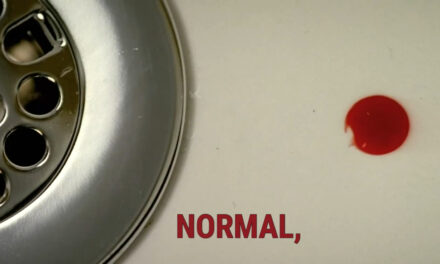What to make of Boardwalk Empire? HBO’s costume drama set in the USA during Prohibition reminds me of one of those fascinating objects that often crop up on Antiques Roadshow. One can admire from afar the detailed textures and evident craft of the thing without having much of a clue as to its function. Everything looks so good – the fabrics, the sculpted light, the big complex stage of the boardwalk itself; Steve Buscemi as the central character, corrupt political boss of Atlantic City, Nucky Thompson, has never looked so compelling. But what is he for?
The puzzle begins at its beginning during the extraordinary title sequence. As aesthetic objects such sequences are interesting because they are designed to be resilient to repeated viewings and to absorb the meanings generated by future episodes. This one shows Buscemi, all dressed up as Nucky walking on the seashore, looking out at the ocean expectantly and watching as a bunch of liquor bottles wash up at his feet. Waves crash. There is a storm. A seagull takes wing. As all of this goes on the main creative credits are posted over the spectacular imagery. Then he walks back toward what we can assume is Atlantic City, as the show’s title lights up the top of the frame.
Why does it show what it does? It must be about more than simply showing in compressed form the narrative content of the series, where this figure controls the arrival of alcohol in his territory. There are many other ways to do this. Why not show boats arriving, people unloading crates, shots of the rest of the city and its characters?
Why does it look the way it does, with its vivid colour and dynamic range, somewhere between a Magritte and HDR landscape photography?

And most puzzling of all why does it sound the way it does, with this bombastic rock music which seems to completely jar against the other period elements?
Well, by doing it this way we get a strong sense of the bottles arriving at the will of a supernaturally powered character. He seems to be a King-like figure surveying an ocean that follows his command, filling itself with bottles without the bother of human transport. It is as if he is not merely a witness to, but the Creator of the forces of nature – like the sea, the wind, the air and the light, the sand and the water. Seeing the flashes of lightning in his eyes suggests it is part of his interiority his mind not a witness to, but a creator of its energy. This is particularly explicit in the moment which seems to animate the camera’s movement around his head – even that motion is swept up by his will. Or is he being swept up by the forces around him, by the camera’s motion?

At the beginning of the sequence he is fragmented by the editing; we get bits – his hands, the flower in his lapel, his watching eyes. By the end he is fully formed but distant from us, seen in long shot, a creature created – but only seen from behind. This sense of the creaturely is further emphasised by the odd, plodding way he walks back from the ocean to the cityscape in the distance, an amphibious freshly evolved thing. And yet he walks toward the built up shapes of modern civilisation not a primordial forest.
In a sequence where time is elastic – moving between slow and normal motion – there is also a tension between the historical and the contemporary. Buscemi is a face I strongly associate with American Independent cinema of the 1990s, a modern figure, yet here photographed in such a close way as to emphasise his age (he is in his early fifties). He seems calm here, yet he is famous for playing characters that are irritably paranoid.
His costume grounds him strongly to the period, but the dynamic music seems in harmony with the elemental movement of the sea, the seagull, the birds, and the lightning storm. It is an instrumental adaptation of a track called ‘Straight Up and Down’ by the American neo-psychedelia band, The Brian Jonestown Massacre, released in 1996 on an album that is itself a finely graded homage to British rock music. Why use this modern music made, as one journalist pointed out, with instruments not even invented in the 1920s?
The first episode of the second season replies to these suggestive enigmas by beginning, directly after the titles, with shots of bottles of booze being collected from the beach by bootleggers, juxtaposed with what sounds like period song being played (but – also puzzling? – one that sounds in perfect condition with no dust or scratch sounds, as if from a just minted vinyl). Perhaps this potential for the internalisation of criticism and responsiveness to it is what makes long form television drama the different kind of aesthetic experience it is.
As with the use of the music here, the show as a whole puts in tension an emphasis on the intense display of period textures with the modern kinds of motion, thinking, and subjectivity of its inhabitants. To some extent we feel that this is what the world would be like if contemporary consciousness was projected backwards into a vividly created past. Of course, that is precisely what it is. But I’m not sure. It remains a puzzle. Which I will go back to again and again.

Jason Jacobs is Reader in Cultural History in the School of English, Media Studies and Art History, University of Queensland. He is author of The Intimate Screen and Body Trauma TV. He is currently working on an Australian Research Council funded project called ‘Worldwide: the history of the commercial arm of the BBC’. He is also writing a book on Deadwood for the BFI TV Classics series, another on its author, David Milch (Manchester University Press Television Series), and is co-editor with Steven Peacock of the forthcoming collection Global Television: Aesthetics and Style (Continuum).





